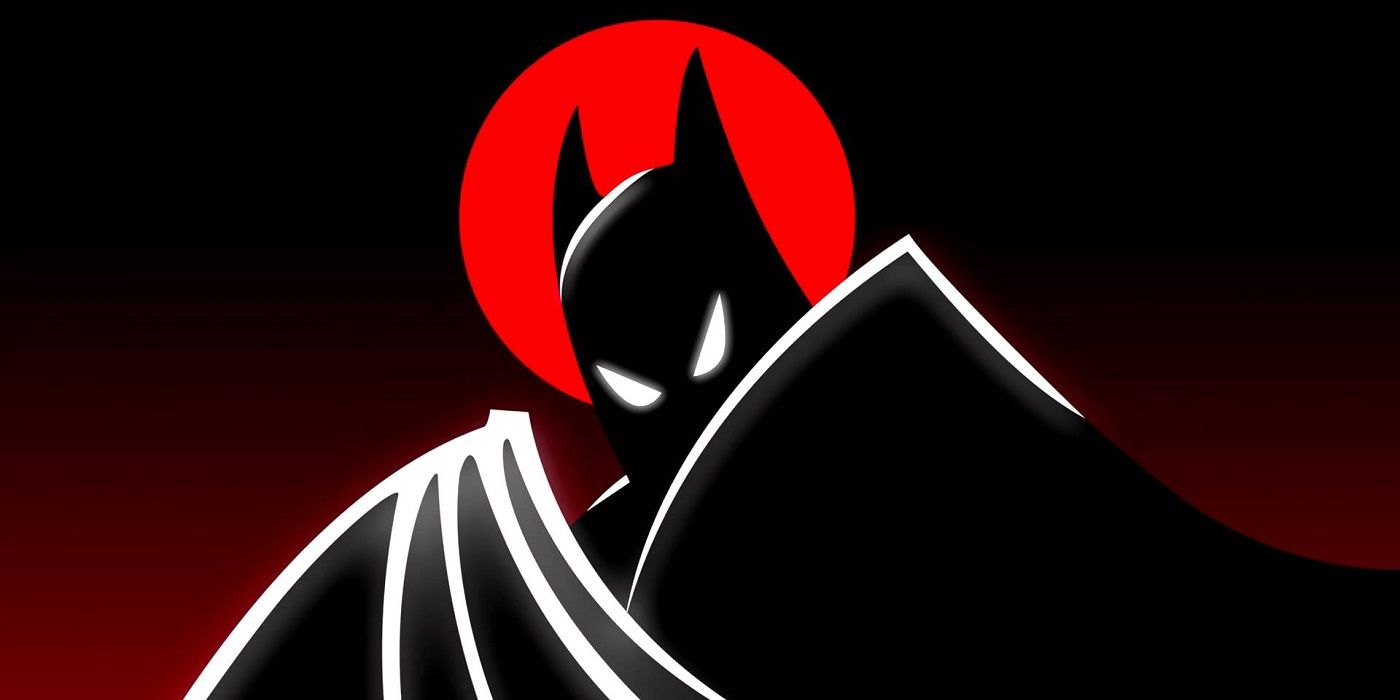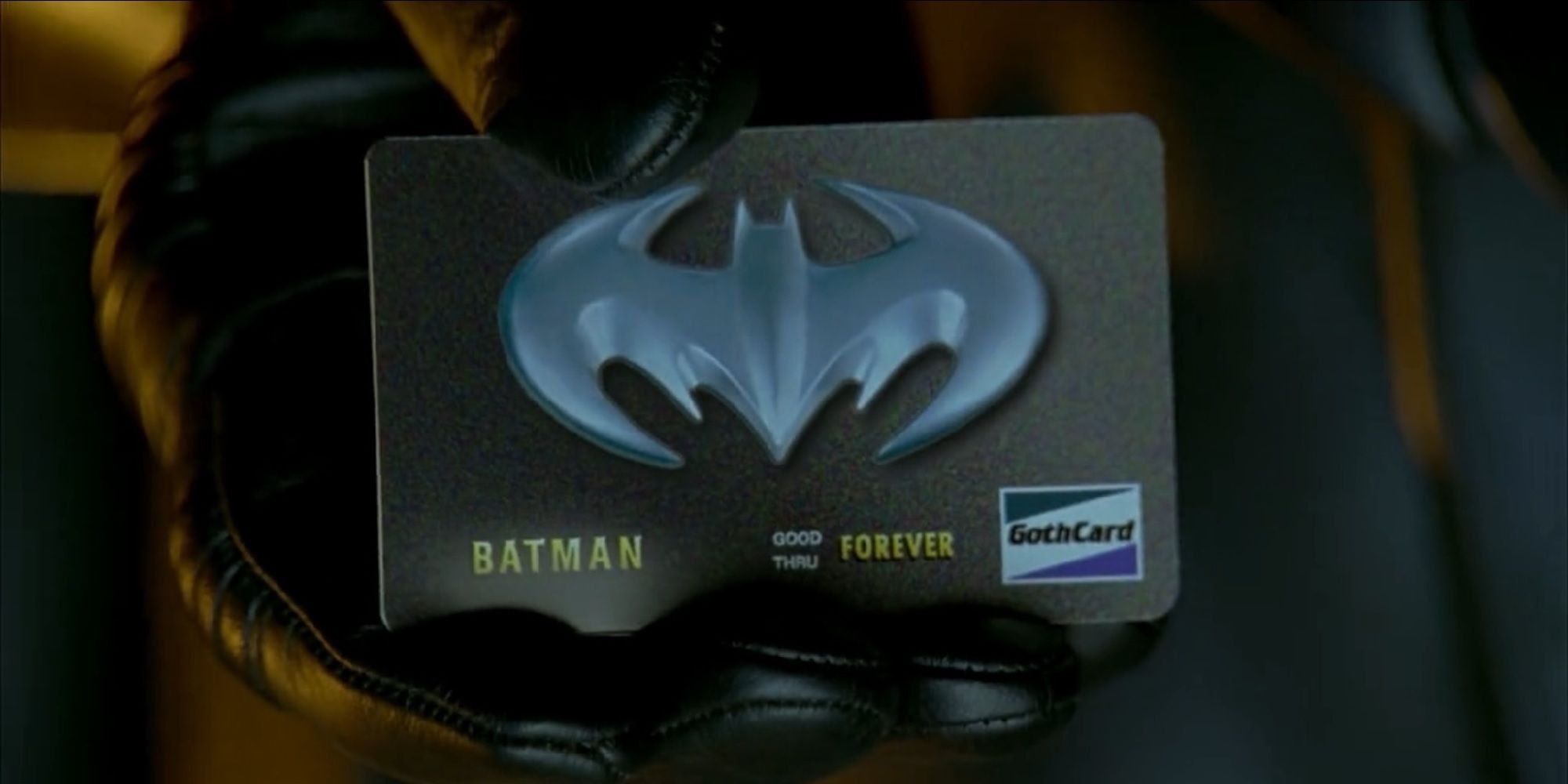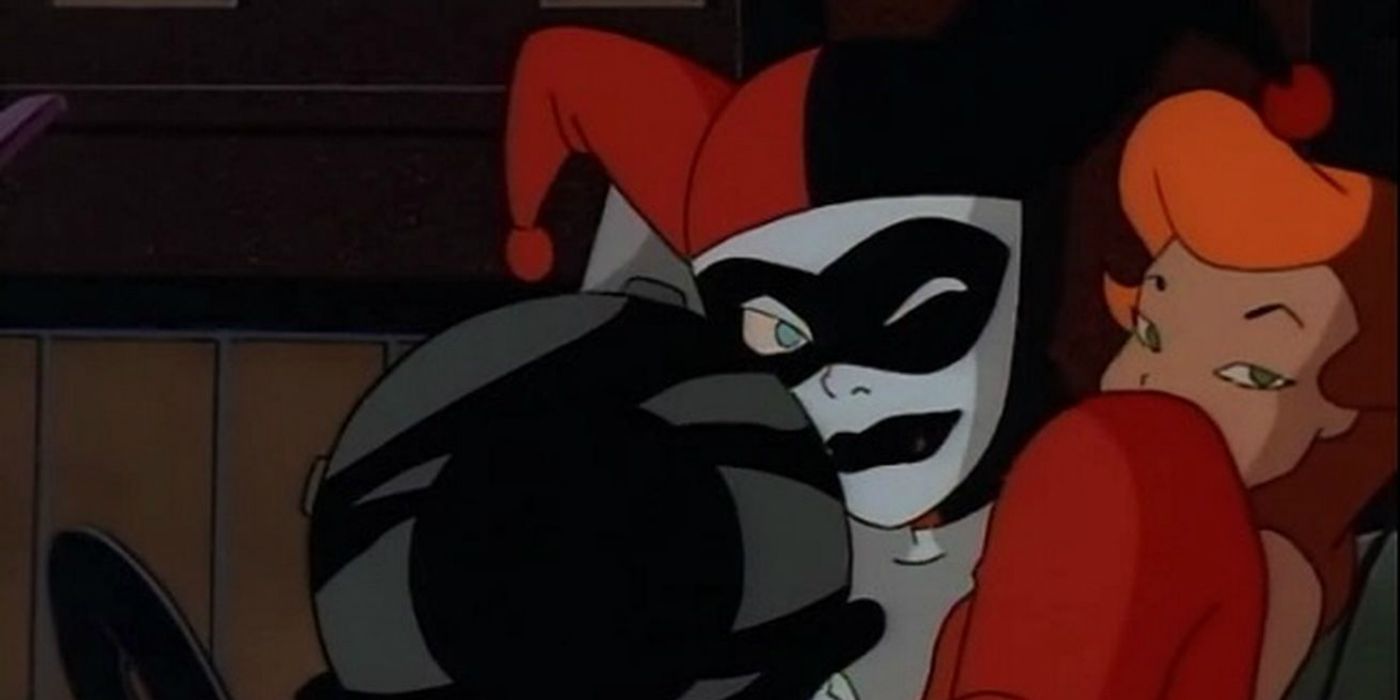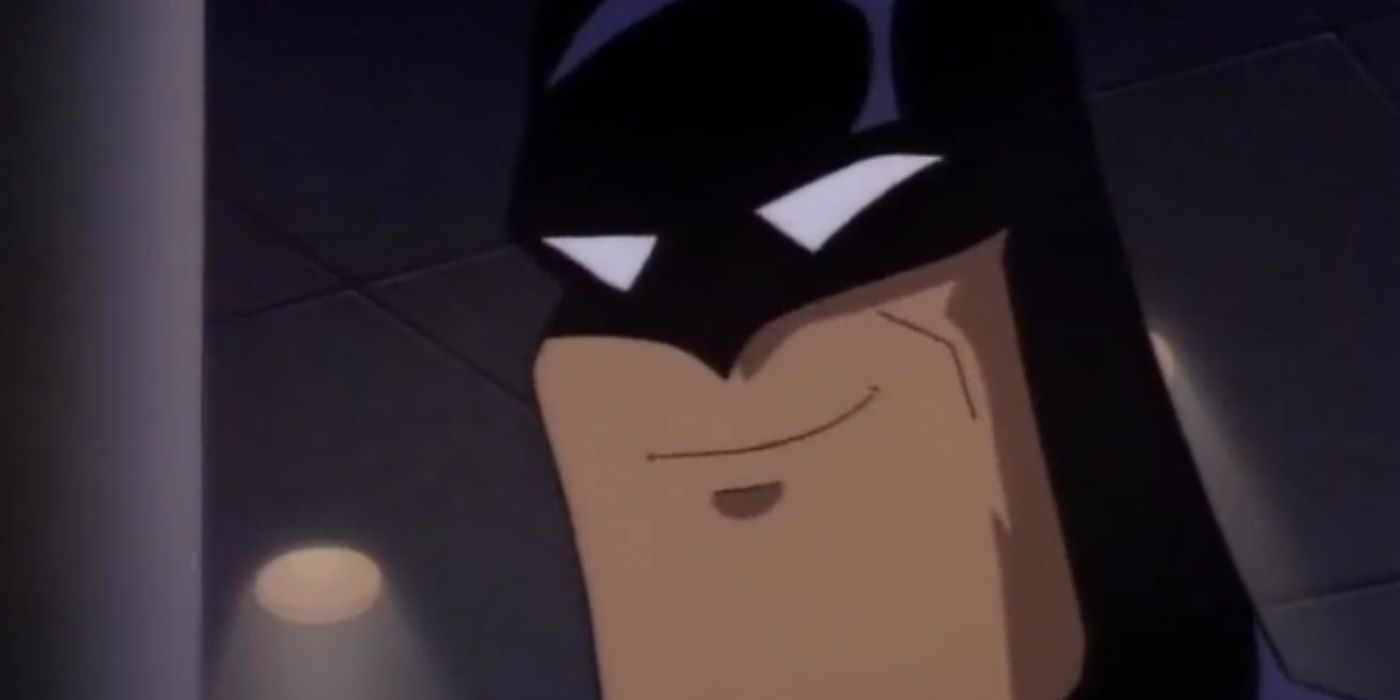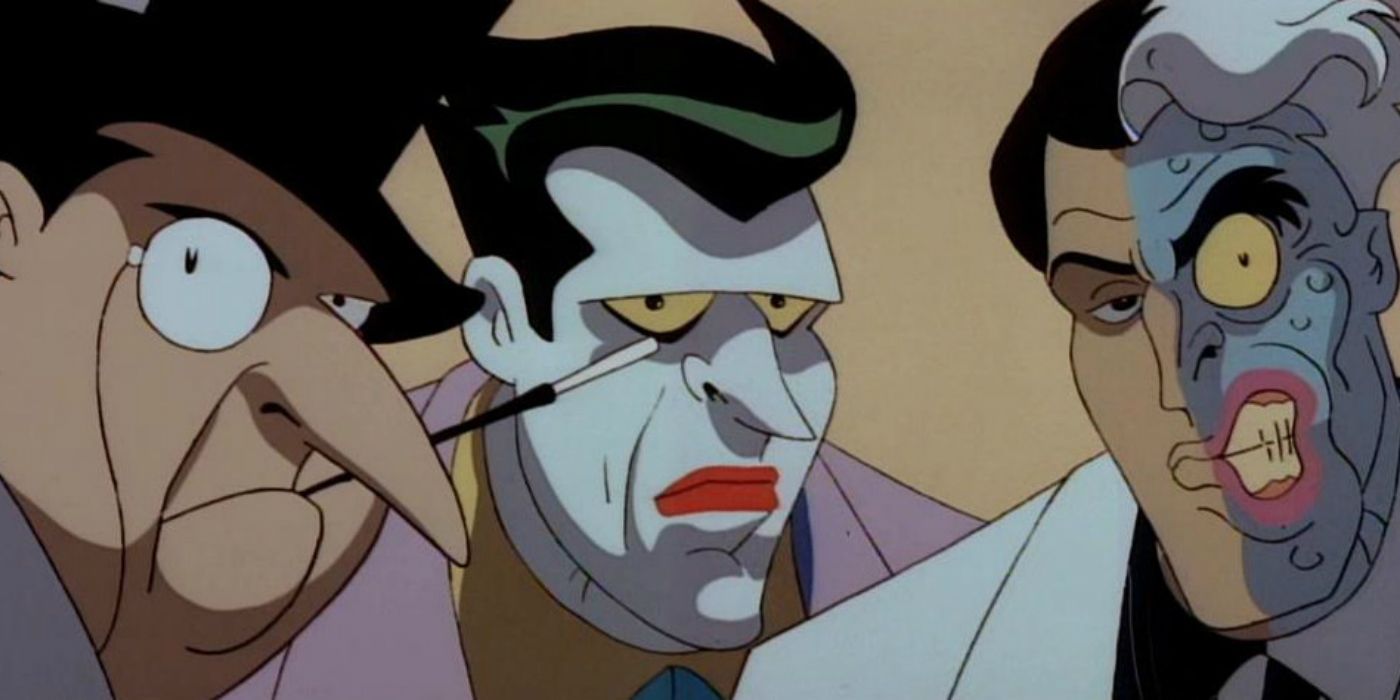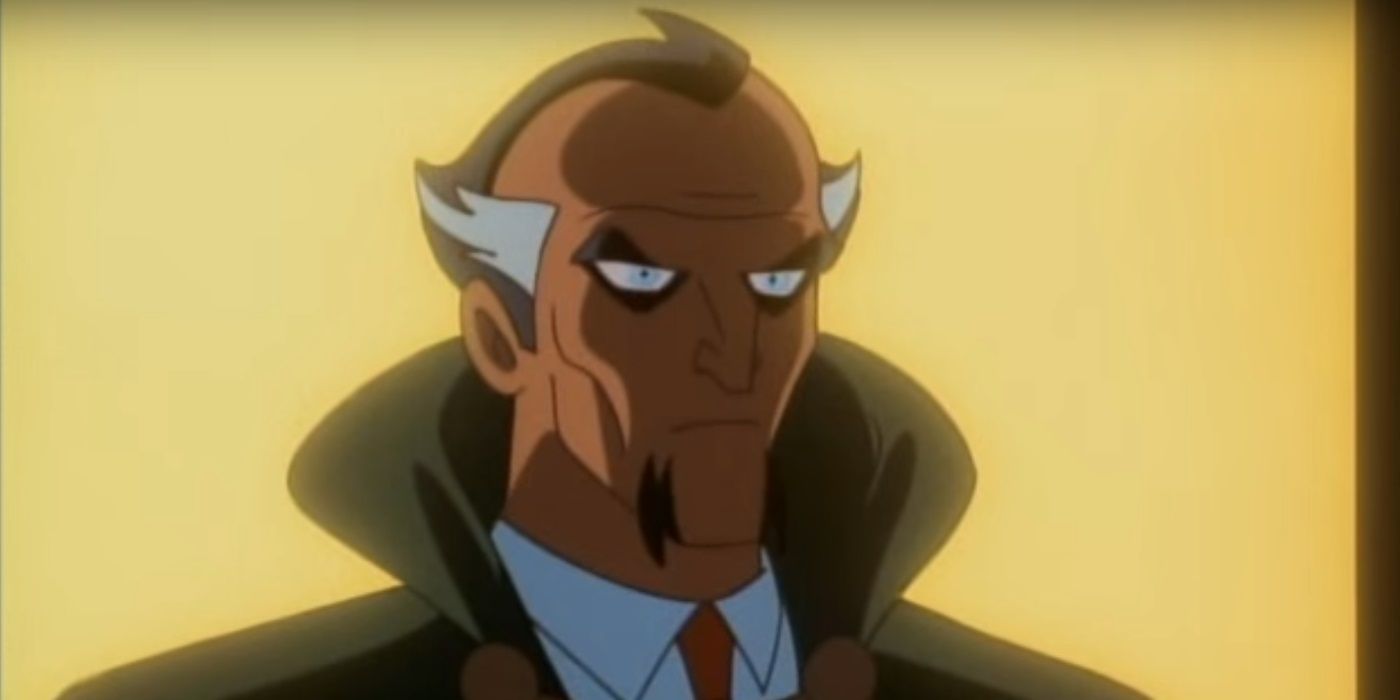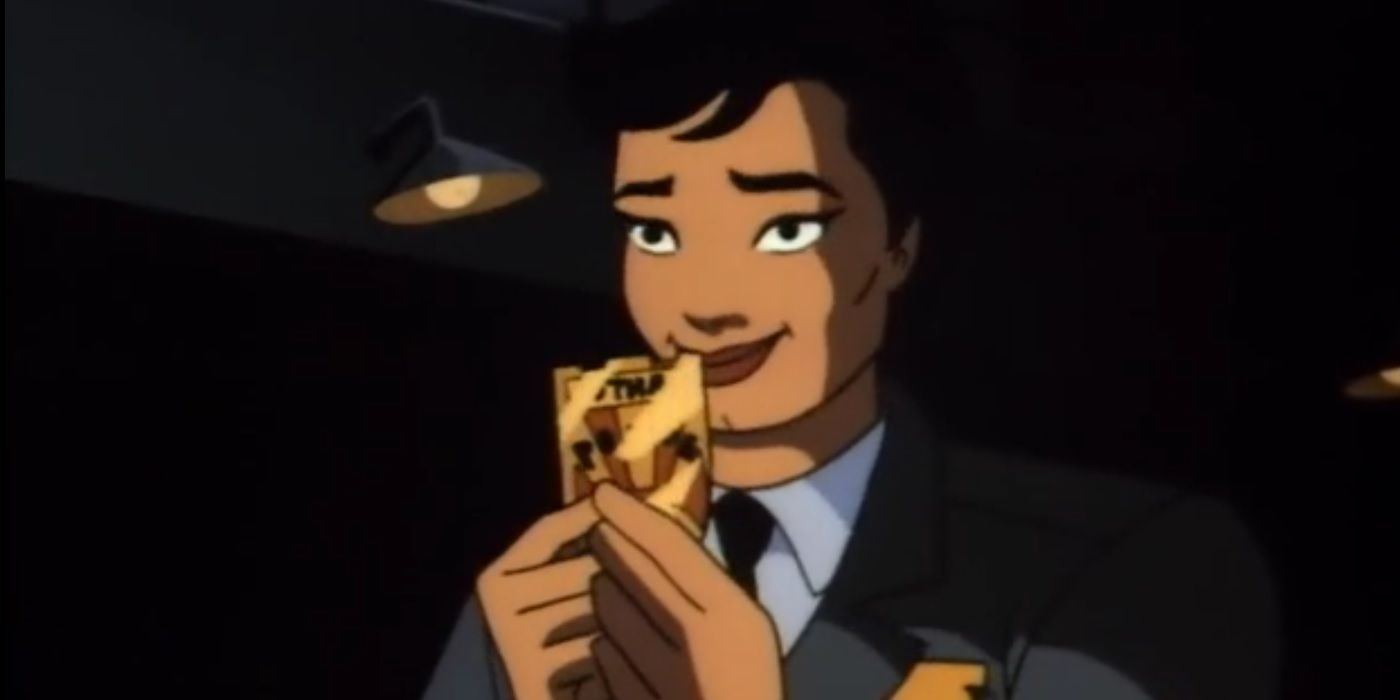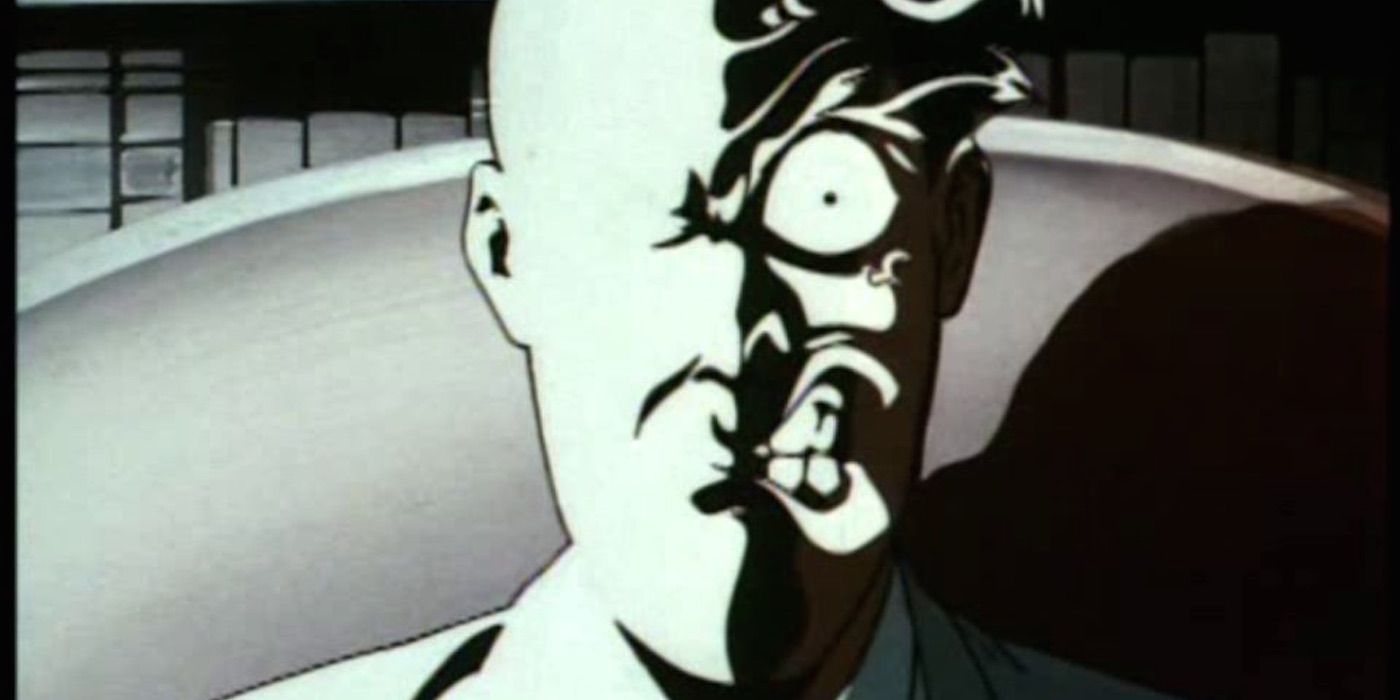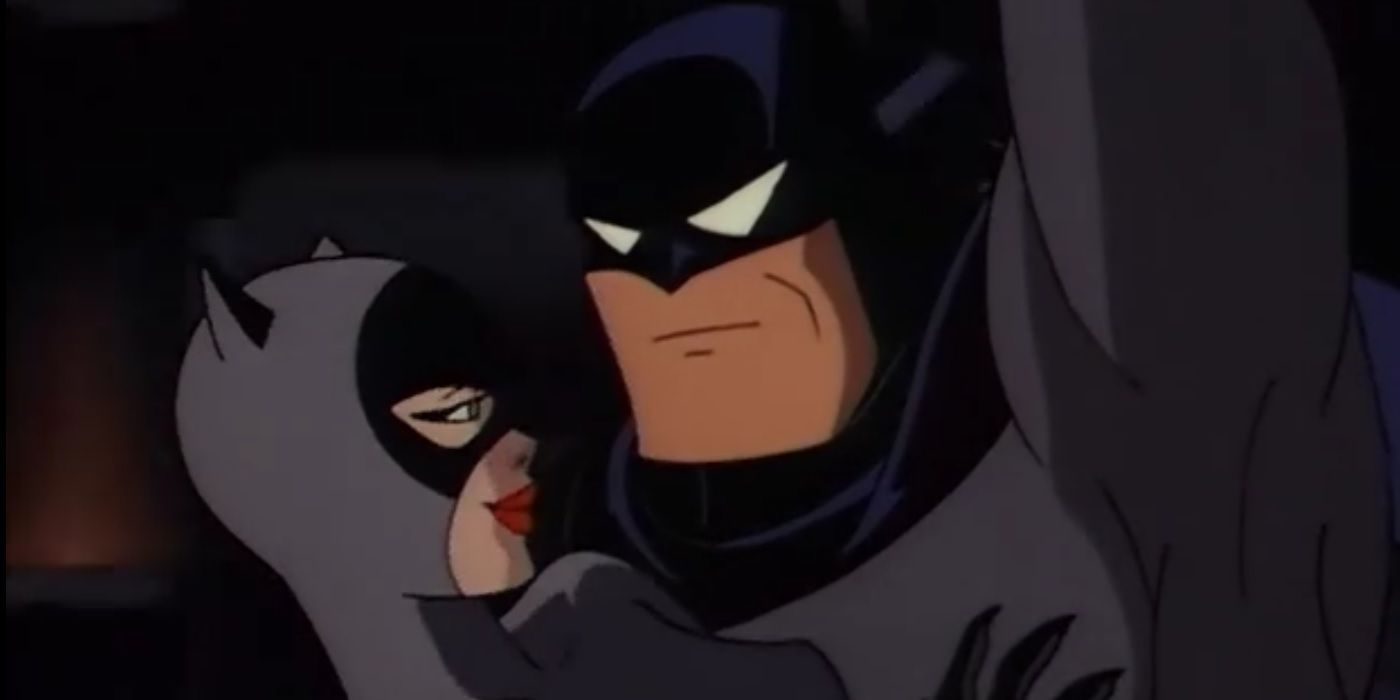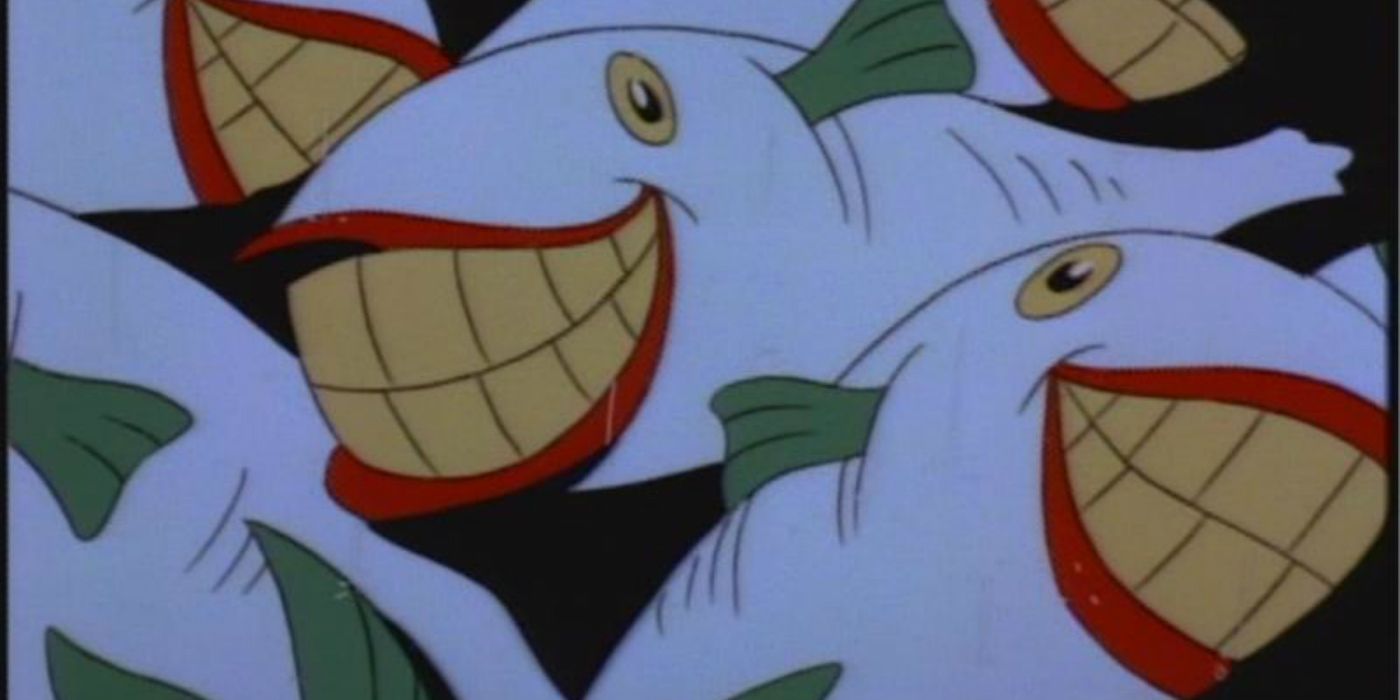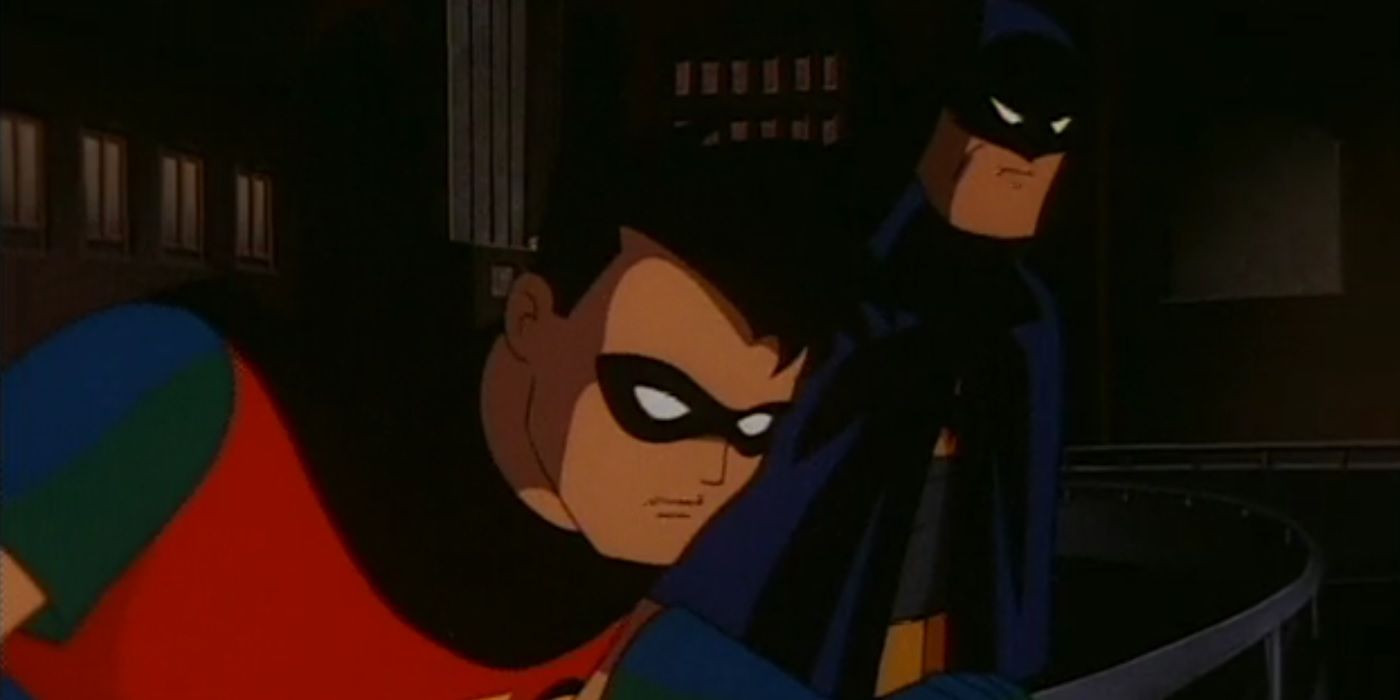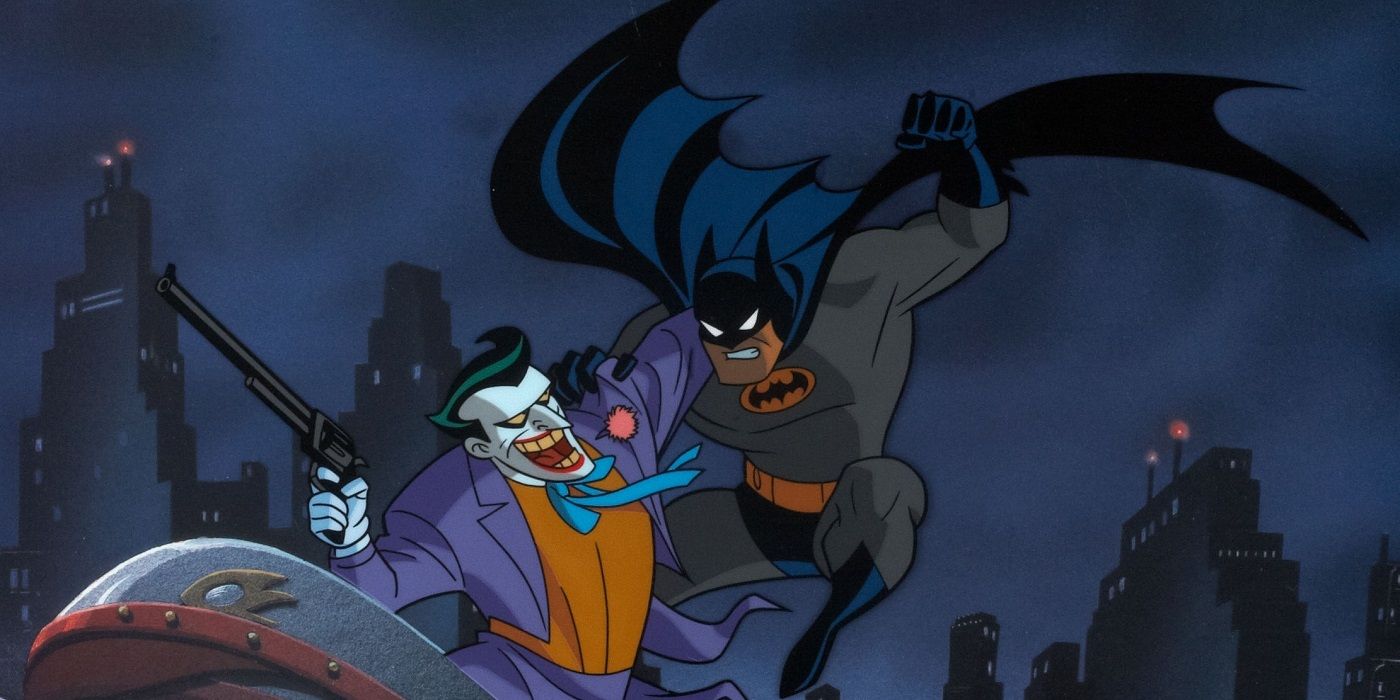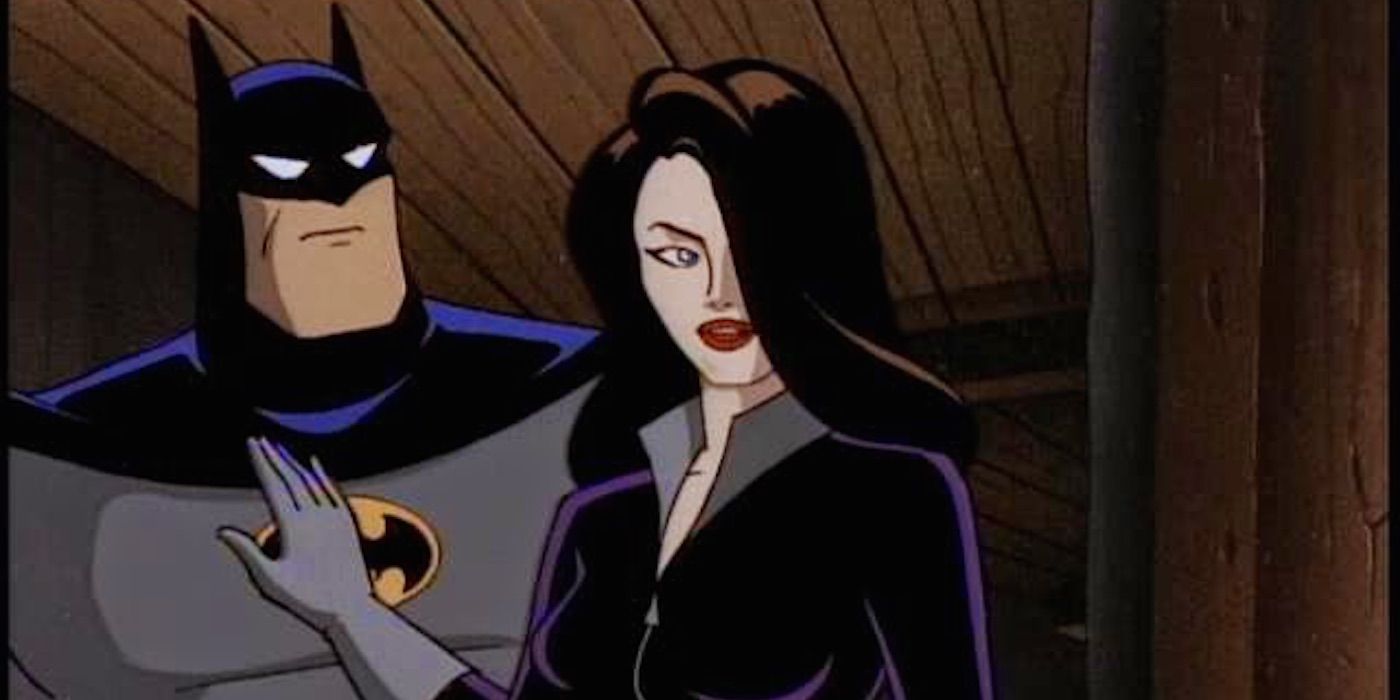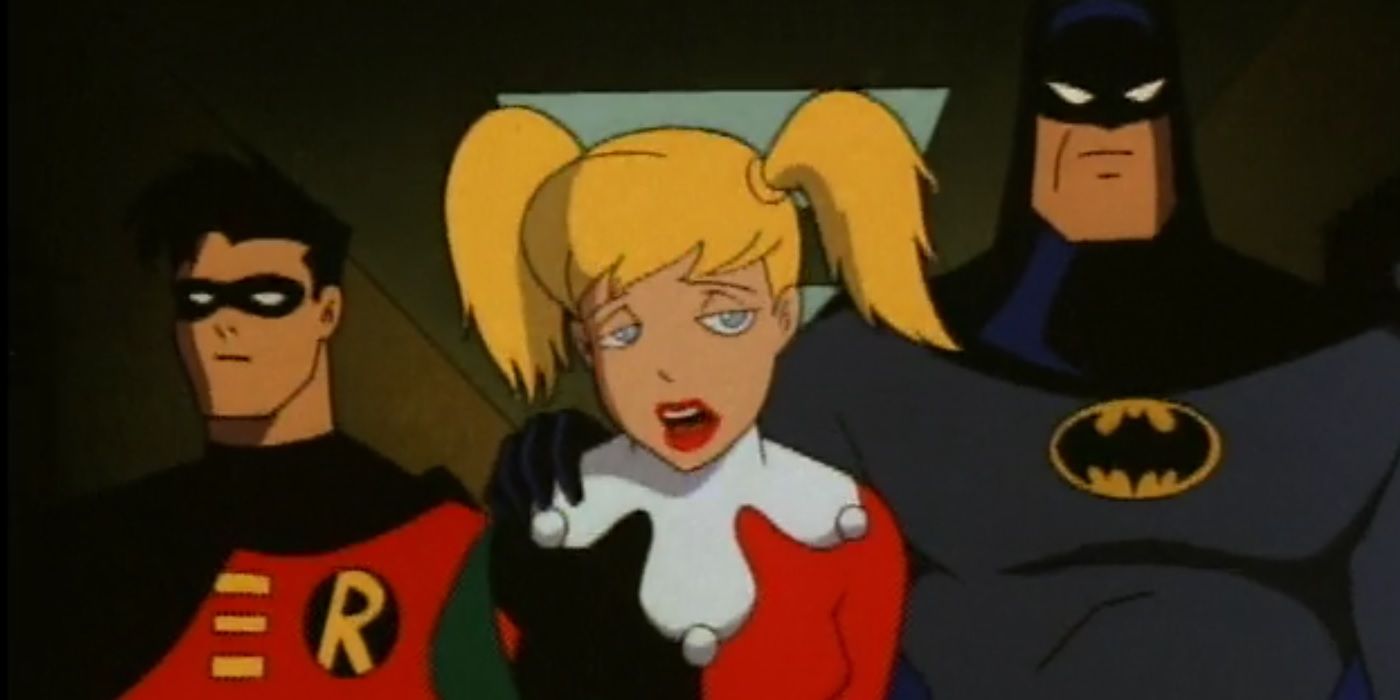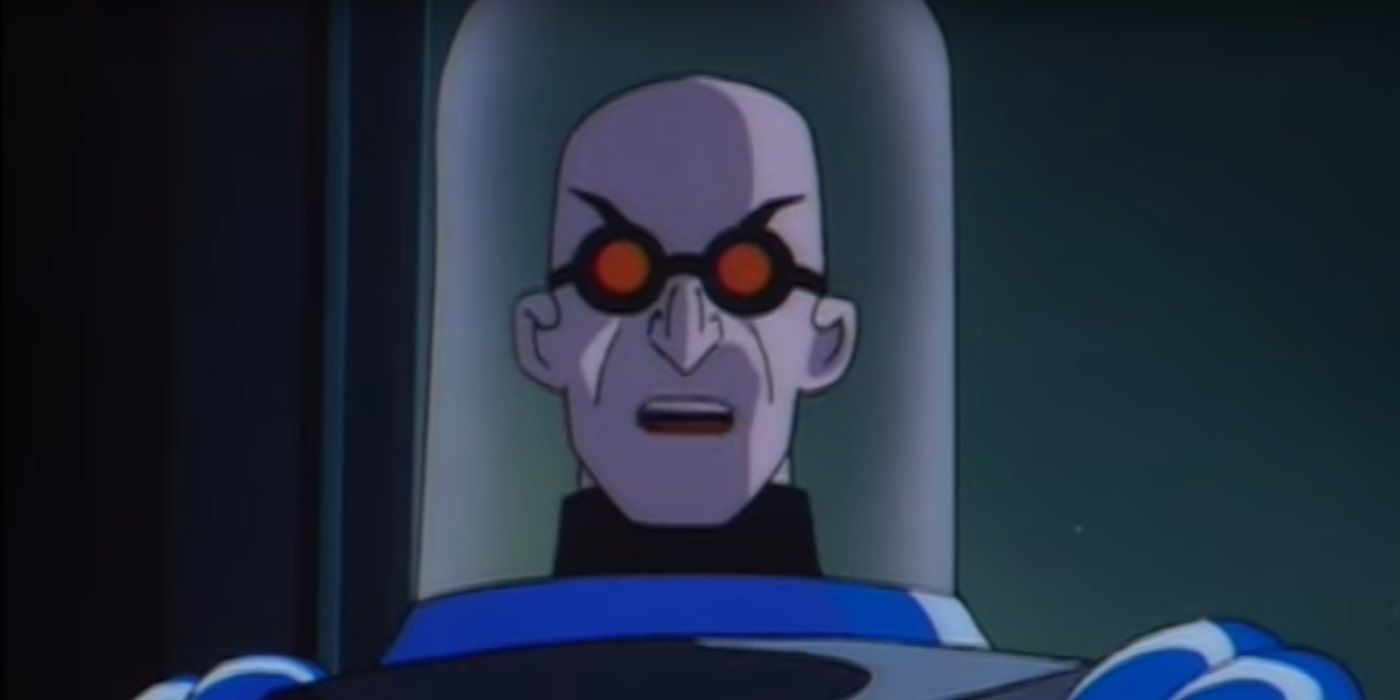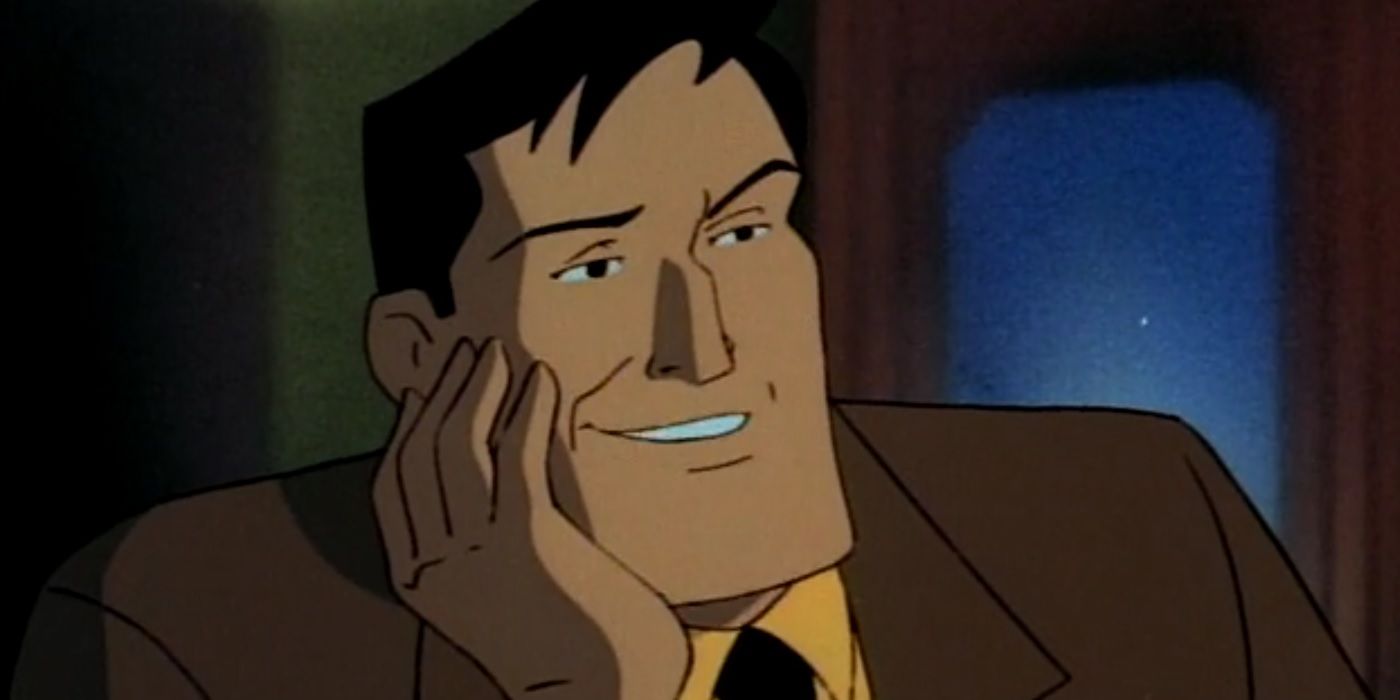Batman has had a series of successful forays into different forms of media. Breaking away from his comic book origins, the hero has had live-action television series, video games and many other forays into different mediums. Most notable perhaps is Batman's animated series and films over the years.
RELATED: 15 Reasons Why The X-Men Movies Are Better Than The MCU Movies
The cowled vigilante has had his high and lows in both realms, but the official "Batman: The Animated Series" particularly shone during its debut in the '90s. The cartoon managed to hit so many good notes during its run, that none of the live-action movies could match it. Yes, even the Dark Knight trilogy. Here's a few reasons why "Batman: TAS" is still the gold standard for Batman.
15 NO IN-FILM ADVERTISING
A somewhat irritating side effect of big-budget Hollywood films, Batman has not been immune to the cross-promotional push in his films. From the egregious Jeep Renegade scenes in "Batman v. Superman," to the use of Siri as the voice of the Bat-Computer in "The Lego Batman Movie," there has been no end to the heavy marketing spotted throughout the Dark Knight's movies. While some are subtle, many are not and it makes for a jarring experience.
The animated series however, didn't suffer from this. Sure it had toys, comics and such made after it, but the show never had to advertise within itself. Bruce Wayne wasn't flaunting designer watches or expensive cars, he was portrayed as rich in the most generalized way. When the movies are forced to push in products, it comes off as kitschy or even downright annoying. The animated series remained thankfully bereft of these so the viewing experience was always enjoyable.
14 HARLEY QUINN
"Suicide Squad" might be an Oscar-winning film now, but it wouldn't have had one of its biggest main characters if it weren't for the animated series. The film is surprisingly the only cinematic debut of the character thus far, but missed a lot of beats for Quinn in her portrayal. In it, she and Joker have an intensely passionate love seemingly without the offhand abuse. Despite having a large part of the film's focus, the depth of Harley's character was only scratched and left a lot of fans somewhat disappointed.
The animated series however, not only originated the character, but also gave her depth. In the show, she struggled with her abusive relationship with Joker, realized her own sense of self-worth and became a formidable villain in Batman's rogues gallery. Sure it had the longevity of several episodes, but what it chose to do with the limited airtime was important to her character, rather than throwaway one-offs.
13 A HOPEFUL GOTHAM
In the movies, the citizens of Gotham were seen as either completely helpless or outright terrible. There was rarely an in-between for them. "The Dark Knight Rises" hammered this ideal even further with Bane's takeover. At the mercy of the villain, the entire city took to either looting everything in sight, or cowering inside their homes. Granted Gotham needs to have corruption of some sort to justify Batman making a splash, but the films paint its residents so black and white that it's ridiculous.
In the cartoon however, the residents of Gotham were often looked into. From the homeless population to the wealthy socialites, a lot of the city's spectrum was examined with each story. In several episodes, Bruce battled corrupt mob bosses, but also saw the heart in regular folks in the police force, businesses or on the streets. This painted Gotham not as a city where its inept residents couldn't take care of themselves, but as a place that needed hope in the Batman symbol. That alone makes it more engaging to see the vigilante do all he can to protect the city's inhabitants.
12 FANTASTIC WRITING MINDS
Over the years, the Batman films have had a lot of good writers tackle the character. Sam Hamm, Warren Skaaren, Jonathan and Christopher Nolan have all tried with a variety of results. The early film forays were campy and even a little darkly humorous, while later ones were gritty and grounded in realism. While they shone in their respective lights, they tended to short shrift their villains with weak backstories or shoving too many of them into one film. The tones changed a lot over the years and many have strayed now into darker territory.
"Batman: TAS" did things differently, tapping into a multitude of comic book writers for its episodes. Two of the mainstay writers though, Paul Dini and Bruce Timm, were a powerhouse when it came to portraying multiple facets of Batman's long comic book history. They breathed new life in old characters (such as the Clock King) to give them a new spin and gave real depth to sidekicks just like the comics did. Rather than shooting for notable one-liners, the writing team was scoring unforgettable stories told in a smaller format.
11 GHULS DONE RIGHT
Ra's and Talia al Ghul were always big figures in Batman's long history. The former being one of the crusader's most formidable foes and the latter being one of his greatest loves. So far they've only been portrayed once in the films and they were both fairly tepid. Liam Neeson as Ra's al Ghul in "Batman Begins" was fitting, but the character motivations to destroy Gotham were dim. Same went for Talia in "The Dark Knight Rises," who fell into an unnecessarily convoluted plot to betray Bruce Wayne and destroy the city.
While the film appearances for the characters were a bit lukewarm, the series absolutely nailed them. Ra's was an ever-present threat, whose long life had made him disenchanted with modern civilization and thus his plans to destroy major cities made more sense. Talia was shown as a capable fighter and passionate love for Batman, with betrayals that genuinely stung the hero instead of making audiences snore.
10 GOOD POLICE SUPPORT
In the earlier Batman films, viewers were treated to a rather portly Commissioner Gordon running a police force that only grew more inept with every entry. In the "Dark Knight" trilogy, the Gotham City Police Department was insanely corrupt and seemingly bereft of any decent cops (except for Gordon of course). What's irritating about both of these impressions is the police force was rendered practically useless either way. If they weren't actively working against Batman, they were haplessly getting trounced on by evil doers.
Thankfully this problem was addressed in "Batman: TAS." Gordon worked alongside the vigilante, and even police officers such as Renee Montoya and Harvey Bullock followed suit. They might have been impulsive in running into danger, but at least they were some G.C.P.D. members that actually wanted to do something good. The series hammered the important point that Batman was trying to save Gotham, but he wasn't without allies in the city that wished for the same thing.
9 HARVEY DENT
The famous Gotham City District Attorney underwent a cast change in the films. Played first by Billy Dee Williams, Dent was largely a background character in "Batman" (1989). After the franchise went through a reboot, the character was played by Aaron Eckhart in "The Dark Knight." Eckhart's new Dent was full of boyish charm and good intentions. Things changed however, when his girlfriend Rachel was killed by the Joker and half his face burned off in an explosion set by the rogue. Dent underwent a rage-induced rampage, murdering corrupt cops with a flip of a coin before Batman accidentally killed him.
Unfortunately, Harvey Dent's development as a character was stunted and then rushed in the Batman films, but this wasn't so in the series. In the show, Dent's friendship with Bruce Wayne is established, as well as his success as a district attorney. These elements are important, as they contribute to the emotional impact Harvey's mental breakdown and eventual changeover to Two-Face is. In the show, Dent was more than a simple dude pushed too far, he was a friend and ally that was swallowed up by Gotham's underworld.
8 SELINA KYLE ROMANCE
Selina Kyle, also known as Catwoman, is a long standing on-again, off-again love of Bruce Wayne's. Portrayed by Michelle Pfeiffer in "Batman Returns" and Anne Hathaway in "The Dark Knight Rises," the character's tone was wildly different between iterations. In the Tim Burton-fueled Bat-sanity, Selina was intensely into Bruce Wayne, but unable to come to terms with his no-killing rules. In Nolan's take, Kyle seemed largely uninterested in Wayne till the very end of their encounter where she apparently shacked up with him after his close call with death.
Catwoman is certainly not an easy character to strike a balance with and, while both performances shone in their own light, the animated series painted Selina's romance with Batman as it was meant to be. Kyle caught onto the hero's identity quickly, kept him at arm's length most of the time and would allow herself to be affectionate with him in small doses. It spoke not only to Selina's independence as Catwoman, but also to Bruce's yearning for her (he even dreams he got to marry her at one point).
7 THE BALANCE BETWEEN SERIOUS AND SILLY
Let's face it, Batman is a character that has been wildly divided throughout his years. Starting out as a plucky detective with his boy wonder to help, he eventually grew hyper serious and grim in later years. The films seem to have a tough time striking a balance between the two. You have "Batman Forever" and "Batman and Robin" fully embracing the campier side of the vigilante, while the Dark Knight trilogy completely eschewed the image for one of grit and dourness.
The television series however, was able to successfully strike up the balance between the two. It aired outlandish kooky episodes boasting time-stopping devices and robot clowns, but also had a lot of heavier episodes as well. Some such examples include "Dreams of Darkness" where Batman himself questions his own sanity, and "I Am The Night" in which the vigilante wondered what good he was doing in his role. "Batman: TAS" wasn't afraid to dive into different tones or elements for the world's greatest detective so long as it served the story, and that's where it really shined above the movies.
6 SIDEKICKS
"Batman and Robin" and "Batman Forever" did their best to introduce the Dark Knight's young wards into the fray. Dick Grayson, portrayed by Chris O'Donnell, was depicted as a headstrong youth who was lost after his parents were killed by Two-Face at the circus. Batgirl, played by Alicia Silverstone, was adapted as Alfred Pennyworth's niece and renamed to Barbara Wilson. O'Donnell's stab at Robin wasn't half bad and the same could be said of Silverstone, but the way the characters were terribly written sold them far shorter of their true potential.
Sidekicks of the Dark Knight in the cartoon were done with a little more heft. Granted this is due in part to their longevity, but they allowed Dick to explore his backstory with Haly's Circus more deeply in "Robin's Reckoning." Batgirl got a proper dive as the daughter of Commissioner Gordon, and evolved into her own formidable crime fighter with plenty of humor. The two served as good supports for Bruce in the field, much unlike their film counterparts that often got themselves in need of saving.
5 DEFINITIVE VOICES
The mantle of Batman has been passed through a variety of actors so far. Starting in the '60s with Adam West, it progressed to Michael Keaton, Val Kilmer, George Clooney, Christian Bale and most recently Ben Affleck. All of the actors have given their own spin on the character so far, but many struggled with the dark tone of Batman's voice. Bale's laughably overdone guttural growl has been poked fun at the most over the years. Most audiences seem to be split on who was really a definitive cinematic Batman.
This oddly enough, doesn't apply whatsoever to the voices of the animated Batman (or his greatest rival the Joker). Even though the characters have been played in cartoons by a number of artists, the animated series gave birth to what is now seen as the definitive voice to each: Kevin Conroy as Batman and Mark Hamill as the Joker. Fans can agree that Hamill's dark chuckle as the clown prince or Conroy's gritty (but not overdone) Batman baritone are simply unmatched by live-action films or otherwise.
4 BIGGER VARIETY OF VILLAINS
Batman's cinematic forays have had a tough time establishing other villains outside of the Joker. Scarecrow was featured as a repeating side character in the Dark Knight Trilogy, while Bane and Two-Face have had two appearances a piece. Penguin, Riddler, Mr. Freeze and Ra's al Ghul have all had their respective shots in the movies, but at the expense of being mashed in with other villains. The films have yet to really allow for a truly centered story on a singular villain who wasn't the Joker.
This weakness of the films is one of the strengths of the series. The above posted characters have all had their respective dive-ins to establish them as truly formidable foes. Riddler frequently outsmarted Batman in their cartoon clashes, Two-Face established his gang presence in Gotham and Ra's al Ghul kidnapped Robin in a scheme to make Bruce his heir. These were all singular stories that established each of the villains as threats in their own right, without the need to be elbowing their way past other rogues.
3 NO-KILLING (FOR REALSIES)
One of the biggest issues in the more recent cinematic iterations of Batman is his sometimes deferential (if not blatant) disregard for human life as collateral damage. Most egregious was "Batman v. Superman," in which the vigilante not only branded criminals, but straight up riddled them with bullets in his battles. The character is known in the comics for having a no-killing rule and, while he has broken it several times over the course of 70+ years of comics, it's laughable when the hero can't resist inadvertently murdering folks for a mere two-hour runtime.
In this case, the animated series has the advantage here in that it was a kids show. Despite that, though, it still very much dealt in matters of death. One such example was when Bruce trained for his fight with Kyodai Ken, a ninja who knew a pressure point that could instantly kill his opponents (and nearly succeeded in killing Bruce with it). Bruce always took the high road with his villains, safely seeing them to Arkham Asylum once he apprehended them and often saving them before their own schemes would harm them by blowing up in their faces.
2 HUMANIZING THE ROGUES
In all the films for Batman thus far, most of the villains came off as one-dimensional in their storytelling. Bane lived in a jail for most of his life, Pamela Isley was a researcher in South America, Oswald Cobblepot was abandoned at birth and so on. For what little backstory they got, it was difficult to empathize with their plights or understand why they became the rogues they did in the films.
The villains however, have the benefit of much more backstory in the animated series. Many memorable episodes were actually dedicated to telling the villain's stories, such as "Heart of Ice" for Mr. Freeze or "Harley's Holiday" looking into Harley Quinn's relapse into a life of crime over a misunderstanding. These forays into the villains were important, in that it established that they weren't just crazies off the street, but real people that let Gotham City's darkness consume them.
1 BRUCE AND BATMAN ARE ACTUALLY REPRESENTED
What is Batman without Bruce Wayne? The two personas are mutually exclusive and important. When Batman isn't trolling Gotham for rogues by night, Bruce Wayne is doing philanthropic work for the city by day. The cinematic versions of the character as a whole have tried to strike up a balance between the two, but have only succeeded largely on either one or the other, never both. The "Dark Knight" trilogy has a good Batman but a middling Bruce Wayne, "Forever" boasted an okay Bruce but off-put Batman, and "Batman and Robin" failed in both arenas.
In the cartoon however, Bruce fights evil doers as much in the board room as he does in costume. He worked on reclamation projects and had an active role pursuing things that WayneTech could do to improve the quality of life for Gotham's citizens. Bruce was seen out of costume as much as in it, maintaining friendships with Harvey Dent and establishing himself as a philanthropist with the best of intentions for his hometown. This balance between the two personas is hard to hit perfectly, but "Batman: The Animated Series" managed to accomplish it well.
What episode of "Batman: The Animated Series" was your favorite? Do you think the series was better than the various Batman movies thus far? Tell us in the comments!

